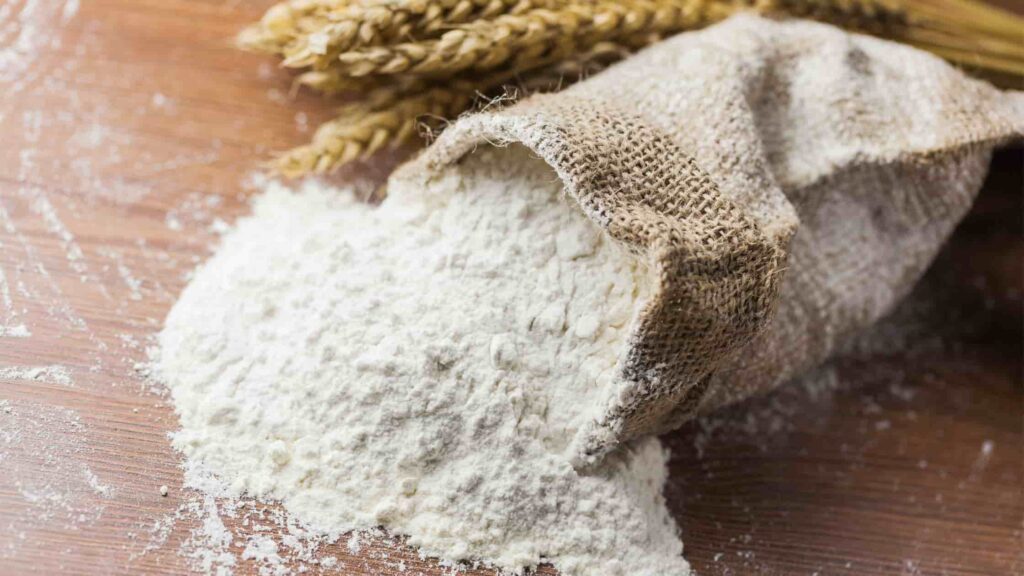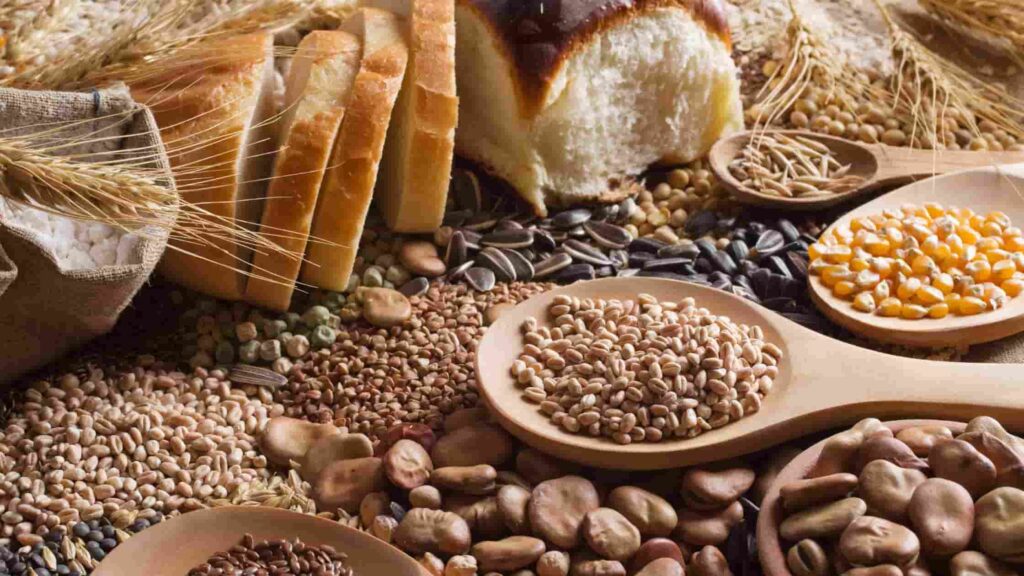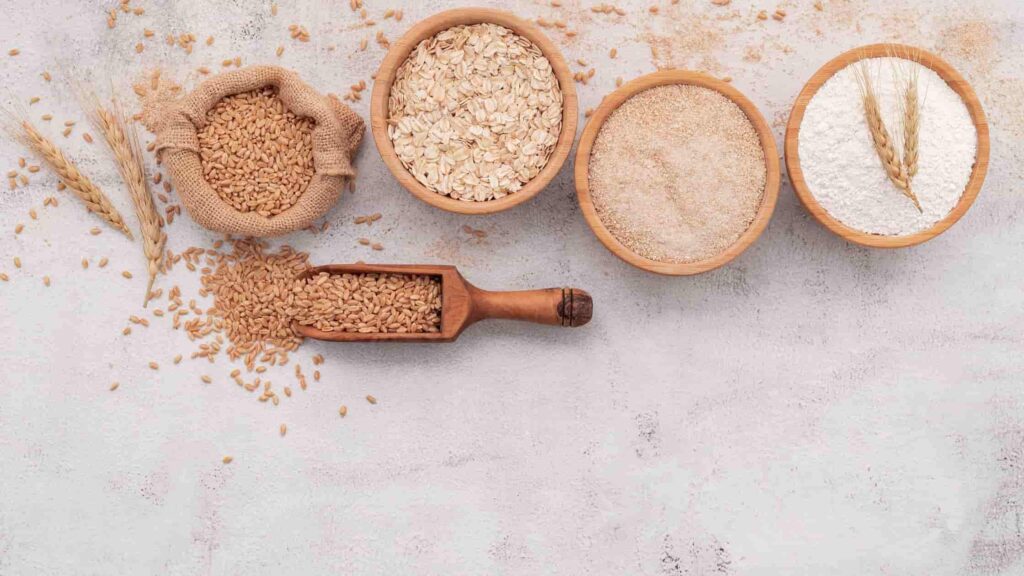Since switching to multi grain flour, I feel fuller for longer and have noticed better digestion and energy throughout the day. It’s now a staple in my kitchen for healthier rotis and baked meals.
Multi Grain Flour is a healthy blend of multiple whole grains like wheat, oats, bajra, and ragi, offering rich fiber, protein, and essential nutrients. It’s ideal for daily use and supports digestion, energy, and weight management.
In this article we discuss about “Multi Grain Flour”
Table of Contents
The Ultimate Guide to a Healthier You:
In the fast-paced world of today, nutrition and health have taken precedence. Making the switch to multigrain flour, a nutrient-dense, flavorful, and adaptable flour, is one of the finest methods to improve your diet. Multigrain flour is revolutionary whether you’re trying to control your diabetes, reduce weight, or just eat healthier.
What is Multi Grain Flour?
Multi grain flour is made by blending two or more whole grains into a single, finely ground flour. Unlike single-grain flours like whole wheat or refined white flour, it harnesses the unique nutritional benefits of each grain used.

Common Grains Used in Multi Grain Flour:
- Whole Wheat: Provides fiber, protein, and B vitamins
- Ragi (Finger Millet): Rich in calcium and iron
- Bajra (Pearl Millet): Excellent for digestion
- Jowar (Sorghum): Gluten-free and high in antioxidants
- Barley: Aids in lowering cholesterol
- Oats: Good source of soluble fiber (beta-glucan)
- Maize (Corn): Adds sweetness and color
- Brown Rice: High in manganese and selenium
Each grain contributes a unique flavor, texture, and health benefit, making the flour nutritionally dense and flavorful.
Nutritional Profile of Multi Grain Flour:
The exact nutritional value may vary based on the grain mix, but here’s a general idea per 100 grams:
| Nutrient | Approx. Value |
| Calories | 350–370 kcal |
| Protein | 10–14 g |
| Carbohydrates | 70–75 g |
| Fiber | 10–15 g |
| Fat | 2–4 g |
| Calcium | 30–50 mg |
| Iron | 4–6 mg |
| Magnesium | 80–120 mg |
Top Health Benefits of Multi Grain Flour:
1. Rich in Fiber:
Multi grain flour supports better digestion, prevents constipation, and promotes gut health due to its high dietary fiber content.
2. Sustained Energy Release:
The complex carbohydrates in multiple grains break down slowly, providing consistent energy without spikes in blood sugar.
3. Ideal for Weight Management:
Fiber keeps you feeling full longer, curbing hunger cravings and aiding in portion control—making it easier to lose or maintain weight.
4. Diabetic-Friendly:
Grains like barley, oats, and sorghum have a low glycemic index, helping stabilize blood sugar levels.
5. Heart Health Support:
Regular consumption of whole grains reduces LDL (bad cholesterol), lowers blood pressure, and improves heart function.
6. Gluten-Free Options Available:
By choosing grains like jowar, ragi, and corn, you can prepare a gluten-free version of multi grain flour suitable for people with celiac disease or gluten intolerance.
Uses of Multi Grain Flour in Your Daily Diet:
Multi grain flour is extremely versatile and can replace refined flour in nearly all recipes.
1. Everyday Recipes:
- Chapati, or multigrain roti: is a daily mainstay in Indian homes.
- Pancakes and Dosas: Add vegetables and spices for a healthy breakfast
- Parathas and Theplas: Great for lunch boxes or snacks
- Healthy Cookies: Replace maida with multi grain flour for a fiber-rich treat

2. Modern Cooking Ideas:
- Multi Grain Bread & Muffins: Perfect for fitness lovers
- Pizza Base: A guilt-free way to enjoy pizza
- Thickener for Soups and Gravies: Adds nutrition and texture
How to Make Multi Grain Flour at Home:
Ingredients (Example Mix):
- 2 cups wheat
- 1 cup bajra
- 1 cup jowar
- ½ cup oats
- ½ cup ragi
- ½ cup barley
Steps:
- Clean all grains thoroughly.
- Sun-dry them for a day to remove moisture.
- Roast lightly to enhance flavor (optional).
- Grind in a flour mill or high-power blender.
- Store in an airtight container in a cool, dry place.
Who Should Use Multi Grain Flour?
Best for:
- Diabetics
- Heart patients
- Fitness enthusiasts
- Kids and elderly (due to its nutrient-rich profile)
- People trying to lose weight
- Anyone seeking a balanced, whole-food diet
Tips for Buying High-Quality Multi Grain Flour:
1. Check the Label:
- Ensure it contains whole grains, not just refined flour with added fiber.
- Avoid brands with added sugars, preservatives, or artificial flavors.
2. Choose Organic or Stone-Ground:
- Stone-ground flour retains more nutrients and has better flavor.
- Organic options are chemical-free and safer for long-term health.
3. Prefer Transparent Brands:
- Reputable brands mention grain percentages and source details.
Multi Grain Flour vs Other Flours
| Feature | Multi Grain Flour | Whole Wheat | Refined Flour (Maida) |
| Grain Type | Multiple | Single (wheat) | Single (wheat, refined) |
| Fiber Content | High | Medium | Very low |
| Glycemic Index | Low | Medium | High |
| Nutritional Density | Very High | Moderate | Poor |
| Health Impact | Very Positive | Positive | Negative (if overused) |
Uses of Multi Grain Flour in Everyday Cooking:
Multi grain flour is extremely versatile and can be used in a wide range of everyday recipes. From making soft rotis and parathas to creating fiber-rich pancakes, it easily replaces refined flour in your kitchen. You can prepare delicious dosas, healthy cookies, and even bake nutritious bread with it.
It also works as a natural thickener in soups and gravies, adding both texture and nutritional value. The nutty flavor and dense texture enhance the taste of any meal, making it a healthy and tasty choice for the entire family.
Multi Grain Flour for Weight Loss and Diabetes:
Multi grain flour is a powerful ally for those managing weight or diabetes. It contains complex carbohydrates and high dietary fiber that slow digestion and keep you fuller for longer, reducing unnecessary snacking. The low glycemic index helps regulate blood sugar levels, making it a safe and smart choice for diabetics.
Unlike refined flours, multi grain flour doesn’t cause sugar spikes or cravings. Incorporating it into your diet can support long-term weight control and better blood sugar management, especially when combined with a balanced lifestyle.
ECO Multi Grain Flour – Wholesome, Nutrient-Rich Flour:
ECO Multi Grain Flour is a powerful blend of carefully selected whole grains that delivers both nutrition and taste. Designed for health-conscious individuals, this nutrient-rich flour combines wheat, oats, ragi, jowar, bajra, and barley to create a balanced mix full of fiber, protein, vitamins, and minerals.

Whether you’re making soft rotis, nutritious parathas, or healthy baked goods, ECO Multi Grain Flour is the perfect choice for daily meals. It supports digestion, helps regulate blood sugar, and keeps you fuller for longer — making it ideal for weight watchers, diabetics, and anyone looking to switch to a healthier lifestyle. With ECO, you get purity, power, and wellness in every bite.
Frequently Asked Question:
1. Is multigrain maida?
No, multigrain is not maida. Maida is refined wheat flour, while multigrain atta is made from a mix of whole grains and is much healthier.
2. How to make multigrain flour at home?
Combine whole grains like wheat, bajra, jowar, oats, and ragi. Clean, dry, and grind them into fine flour for a nutritious homemade mix.
3. What are the disadvantages of multigrain atta?
Some people may find it heavier to digest or dislike its dense texture. It may also be unsuitable for those with specific grain allergies.
4. How to make multigrain atta at home in Pakistan?
Use grains such as wheat, barley, bajra, jowar, and makai that are readily available in your area. Clean, dry, then grind them in a nearby flour mill or at home.
5. Which is better, wheat or multigrain?
Multigrain is generally better for overall health due to higher fiber and diverse nutrients. Wheat is simpler but less nutritionally diverse.
6. How to make multigrain roti?
Roll the multigrain flour into flat discs after kneading it with warm water. Cook on a hot tawa until brown and slightly puffed on both sides.
7. Is multigrain atta heavy or light?
Multigrain atta is heavier than regular wheat flour because of its high fiber and dense grain content. However, it’s more filling and nutritious.
8. Which grain is best for chapati?
Wheat is the most commonly used grain for soft chapatis. However, jowar, bajra, and ragi are great options for healthier variations.
9. Which brand atta is best?
Popular and trusted brands include Aashirvaad, Pillsbury, and 24 Mantra Organic. Choose based on grain mix, freshness, and no additives.
10. Which bread is multigrain?
A variety of grains, including wheat, oats, barley, and flaxseed, are used to make multigrain bread. Compared to white bread, it is healthier, denser, and more fibrous.
11. Which is the healthiest flour for chapati?
Multigrain flour is among the healthiest options due to its mix of fiber-rich and nutrient-dense grains. It supports digestion and sustained energy.
Conclusion:
Multi Grain Flour is more than just a healthy alternative — it’s a complete nutritional upgrade for your daily diet. Packed with the power of multiple whole grains like wheat, oats, ragi, jowar, and bajra, it offers essential fiber, protein, and minerals that support digestion, weight control, and blood sugar balance. Whether you’re managing a health condition or simply aiming to eat better, switching to multi grain flour is a smart and sustainable choice. From traditional rotis to modern baking, its versatility makes it a must-have in every health-conscious kitchen. Start small, stay consistent, and experience the long-term benefits of this wholesome superfood.
Read More
- Stevia Powder, The Natural, Zero-Calorie Sweetener You Need to Know
- Pumpkin Seed—Complete Guide to Benefits, Nutrition, and How to Eat Them!
- Moringa Powder—A Complete Guide to Benefits, Uses, Side Effects & Nutritional Facts
- Chia Seeds—A Complete Guide to Benefits, Nutrition, and How to Use The
